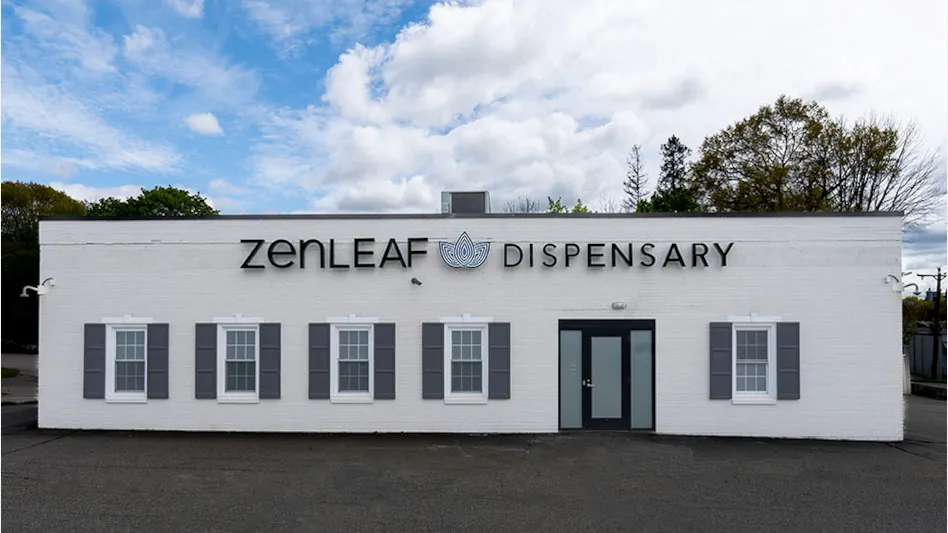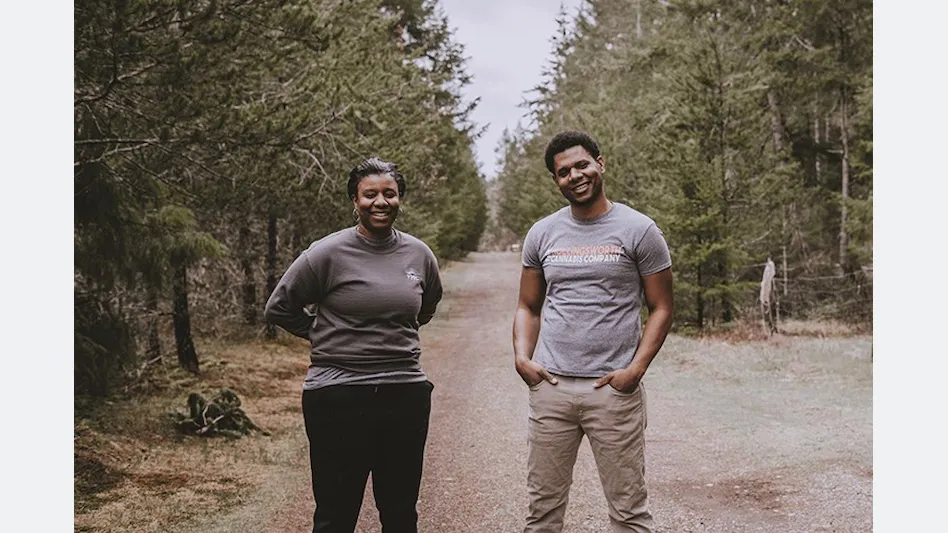
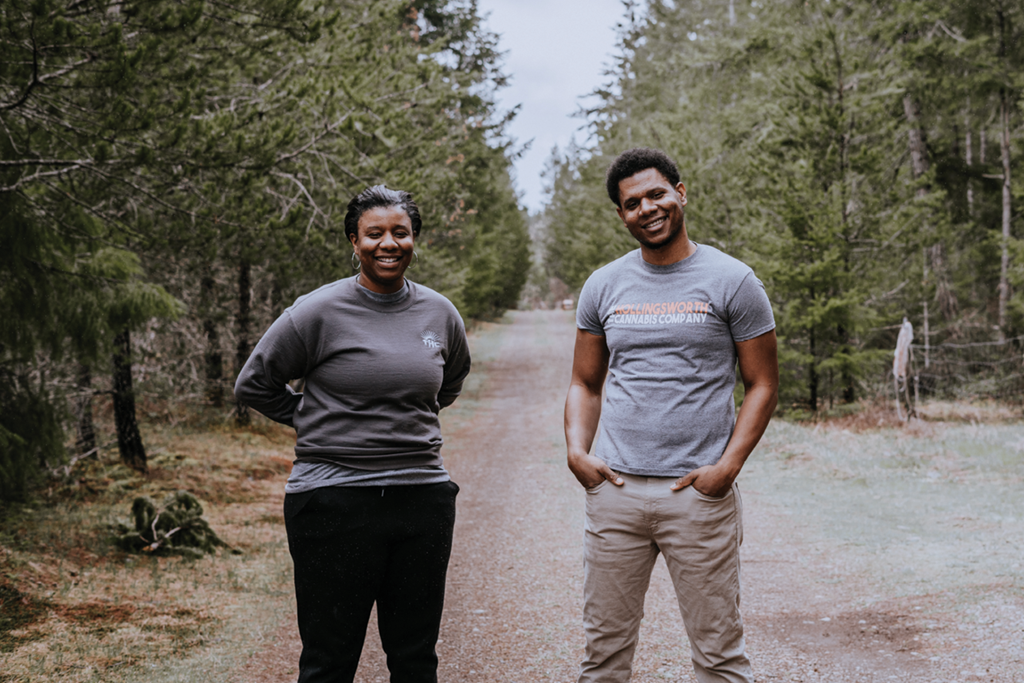
On Nov. 6, 2012, Raft Hollingsworth III, founder and CEO of The Hollingsworth Cannabis Company (THC Co.) and his sister, Joy, the company’s director of operations, watched election results roll in in Seattle’s Capitol Hill neighborhood, one of the city’s most diverse districts filled with coffee shops, eateries, pubs and gay bars. It was an evening full of wins for them, as they witnessed President Barack Obama’s re-election and the legalization of adult-use cannabis and same-sex marriage in Washington State.“Seattle’s a pretty liberal city, so everyone was celebrating here,” Joy remembers. “People were going crazy on Capitol Hill, just having a great time, because these three things all meshed together at one time.”
Raft remembers it well, too, as it was also the moment he realized a new opportunity had presented itself: the chance to grow cannabis legally and commercially.
Nearly a year later, in October 2013, Raft called his family together at his parents’ home, where they convene most weeks. His mom, Rhonda, father, Raft Jr., and Joy were huddled around Raft, the baby of the family, when they noticed something out of the ordinary: The youngest Raft brought a PowerPoint presentation to their typically casual gathering.
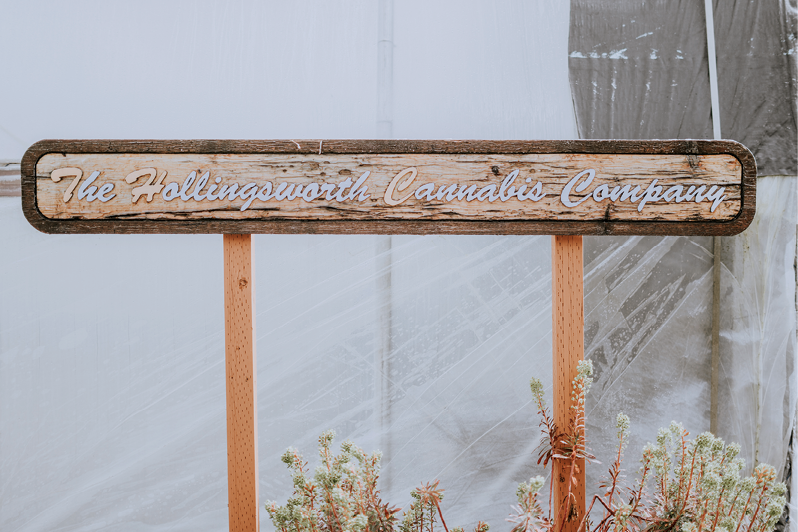
He walked his family through the business plan he developed during the past six months—for a cultivation operation in outdoor hoophouses. He explained why this was the most cost-effective way to cultivate cannabis at scale, how they could quickly launch the business with minimal money down (roughly $80,000) by following the regulation requirements to the letter (which Raft III summarized as “an 8-foot fence, cameras covering the entire property, and that’s really it”) and by not going overboard on unnecessary purchases.
He wanted his family to be his partners and investors in the project.
“It was mostly just to get my family kind of excited about the prospect of starting our business,” Raft III says of his living room pitch. “I knew that cannabis wasn’t going to be a passion project for them. But I knew that working together and trying something new and taking a risk together would be something fun.”
His father, a career parks department employee in Washington State, and his mother were a bit surprised by the presentation’s subject matter. But they also were impressed by the amount of thought their son had put into the plan, and by the end of the pitch, they were on board.
“I saw his passion and knew that he had done a lot of legwork on this,” Raft Jr. explains. “And so you go with your heart, and your heart says, ‘you got to support them.’”
Joy, however, was more hesitant. “I thought he was psycho,” she says with a laugh. But when her dad retired from the parks department and invested his retirement fund into the project, she felt compelled to join the new family business.
“Ever since we’ve started, it’s felt like we jumped off a cliff and we’re building a plane on the way down,” she says.
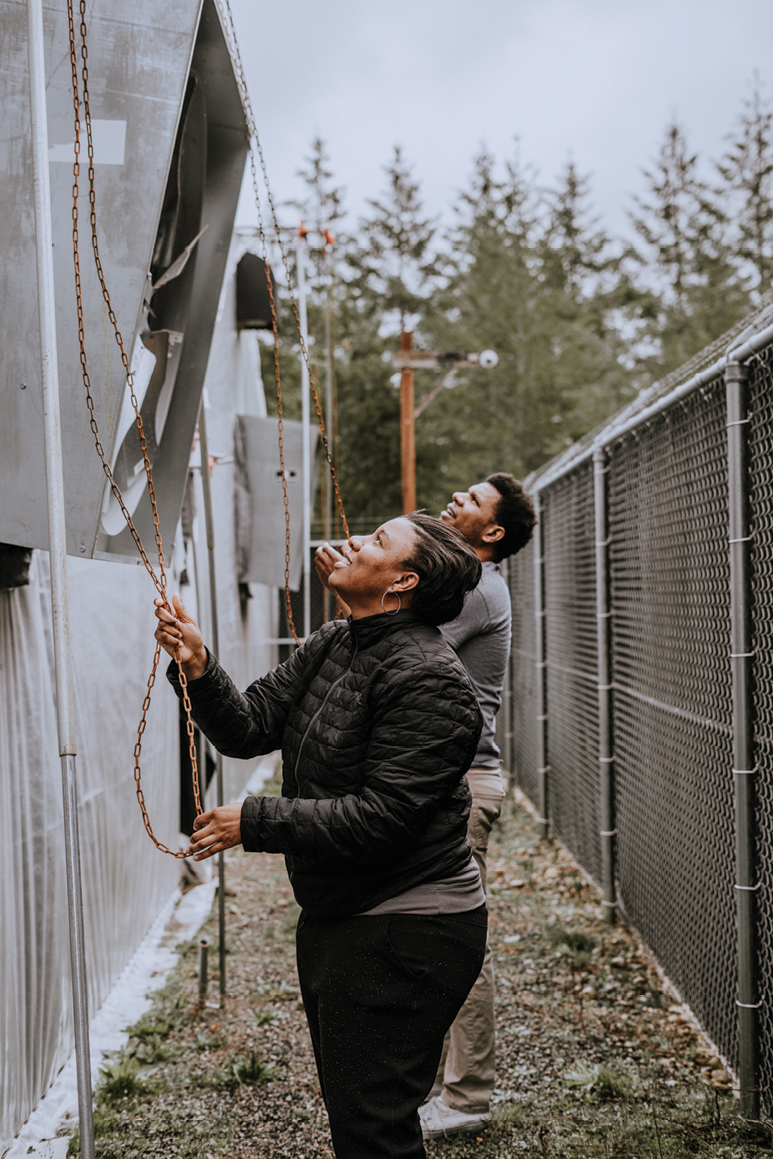
Quick Launch
A lot has changed in the five years since THC Co. harvested its first cannabis crop. For starters, the company is now much more than a hoophouse surrounded by an 8-foot fence topped with razor wire and decked out with cameras. Today, the 30,000-square-foot (tier 3) farm in Shelton, Wash., is fitted with eight greenhouses, a post-harvest space and an extraction lab.
Growing and scaling the business was a slow process for the Hollingsworths. In the first two years of operation, the parents and siblings did everything themselves, from figuring out licensing to purchasing the property, managing crops (including hand-watering) and harvest. Raft III even slept on a fold-out cot in the office located on the property to avoid the 90-minute commute back to Seattle. Staying on site and managing everything was crucial to the business surviving those early growing pains and to Raft III learning the intricacies of growing cannabis at scale.
“I stayed there … and really worked to understand forward and backward exactly what ... would need to happen on a day-to-day basis. And that’s fundamental,” Raft III says.
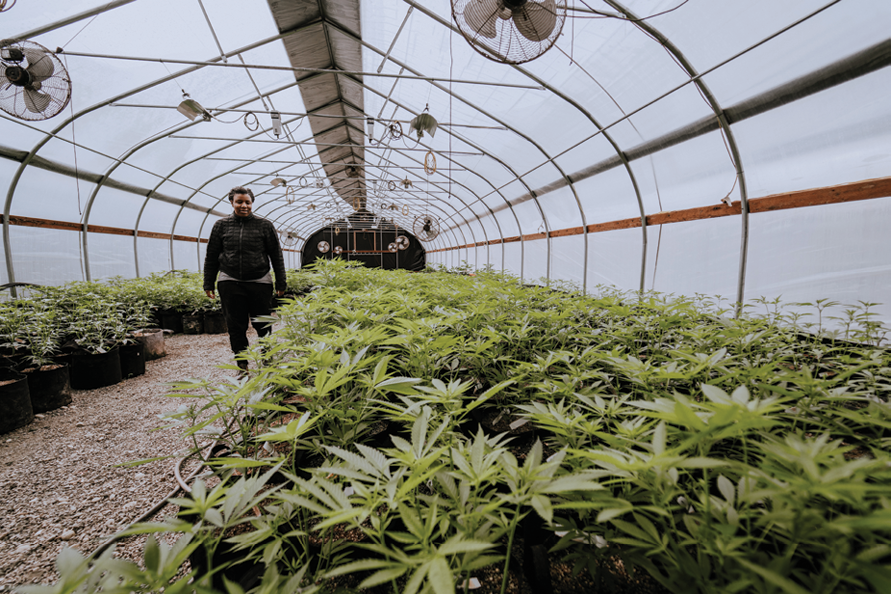
When he encountered problems that come with expanding your 100-square-foot-basement grow to a one-acre farm, Raft III was hard-pressed for resources. So he turned to the nearest approximation to a cannabis education he could find: Skagit Valley tulip farmers. “Now granted, growing an acre of weed is not some big undertaking when you talk with a guy who has a thousand acres of tulips up in Skagit Valley,” he says. “But you could take a lot of their practices and implement [them] into what you’re doing.”
One such practice was automating irrigation. It wasn’t until February 2016 that the Hollingsworths built up the capital to invest in an irrigation/fertigation system, giving the CEO plenty of time to research his options. Raft III opted for a PVC system with Dosmatic injectors for the company’s fertilizer salt nutrients. That system alone saved him and his family 18 working hours per day. “[It] changed the outlook of our farm and allowed us to have multiple cycles, multiple harvests, … [and] not have to be onsite 24 hours a day,” he explains.
When it comes to making decisions for the business, Raft III tries to take as much time as he can to evaluate a situation from all angles—a vital approach when your parents’ retirement fund is at risk and fierce competition and razor sharp margins quickly chew through any budgetary wiggle room you afford yourself. Take for example THC Co.’s growing medium mix of 50-percent coconut coir, 20-percent sphagnum peat moss, 20-percent dolomite lime, oyster shells, worm castings and other amendments, and 10-percent perlite and vermiculite. The Hollingsworths knew they were looking for a medium that drained well. Raft III tested out the mix in a handful of pots before making the full conversion to this new media. “It was a really light, inert mix that was soilless, and … reusable,” he says. The budget-friendly price of $75 per yard sealed the decision.
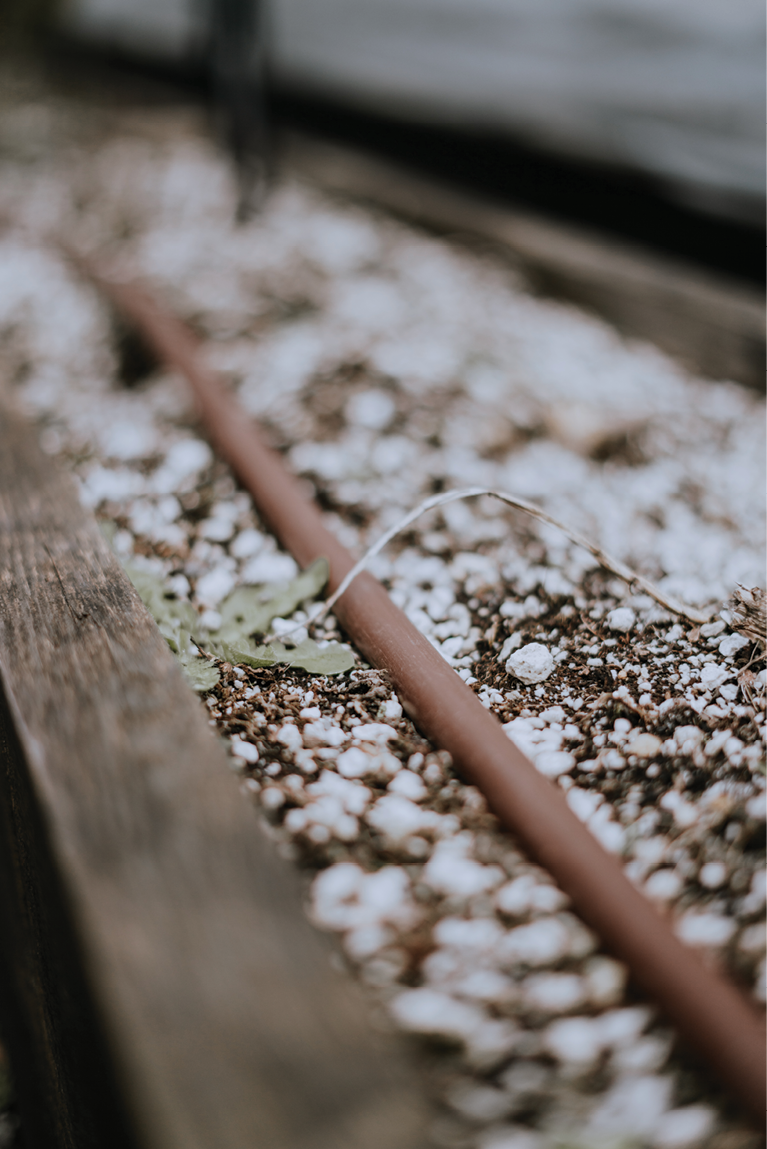
Scaling and Adapting
This pragmatic approach to cultivating and scaling a business doesn’t mean that THC Co. always chooses the most frugal option. A product or system’s contribution to the company’s carbon footprint is also a factor.
As children of a former parks department employee, environmental stewardship was always a big part of the Hollingsworths’ identity. Raft says, “I knew that farming and agricultural gases were a big contributor to greenhouse gas emissions.” (According to a recent Environmental Protection Agency (EPA) report, “in 2017, greenhouse gas emissions from the agriculture economic sector accounted for 9 percent of total U.S. greenhouse gas emissions. Greenhouse gas emissions from agriculture have increased by 8.8 percent since 1990.”)
THC Co. uses a minimal amount of supplemental lighting–often a major portion of a cannabis business’s power consumption and carbon emissions–instead operating as a sungrown farm as much as it can.
The CEO looked into adding power when he was considering implementing a small indoor operation for the winter or additional greenhouse lighting. During a casual conversation with a neighboring cannabis farm, a roughly 9,000-square-foot indoor grow, Raft III asked how much their power bill was, as both groups were working with the same utility company.
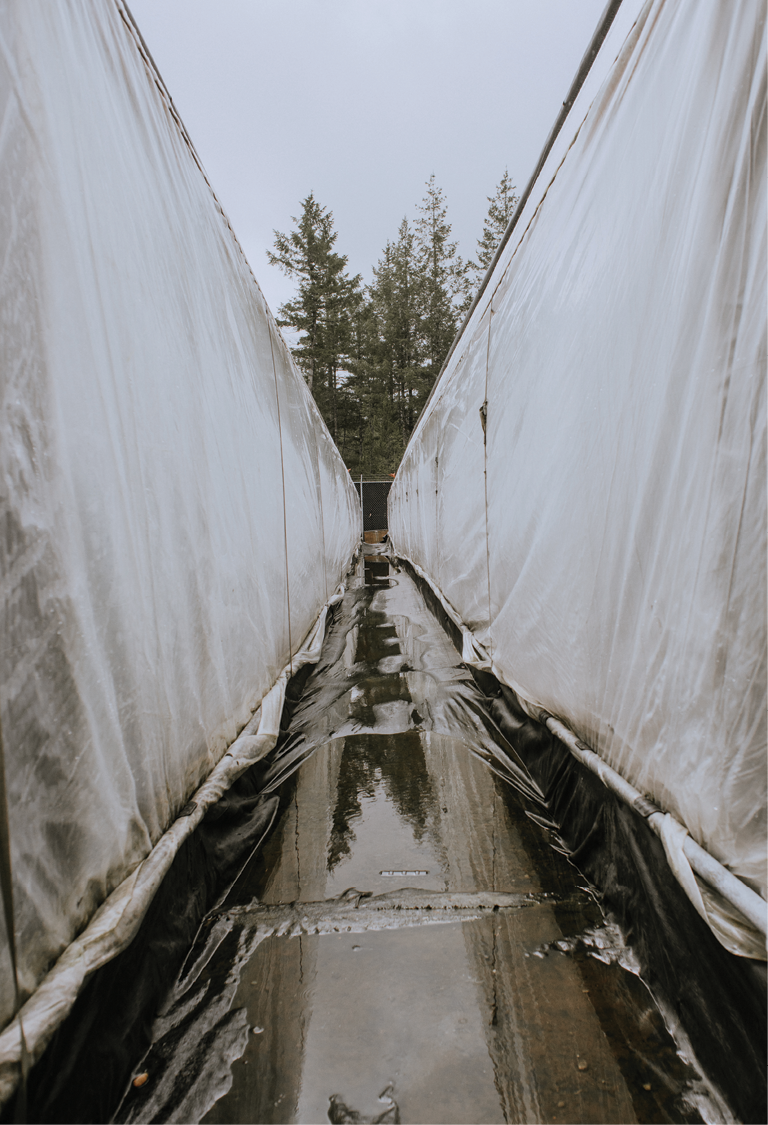
“Their power bill was like $14,000 a month,” 10 times as much as THC Co. was paying at the time. “And I said, ‘That’s not sustainable.’” The utility company also wanted to charge THC Co. nearly a quarter-million dollars to run additional power lines to the property. As such, the farm still operates on just a 400-amp circuit (equivalent to two family homes with central air systems).
Beyond electricity, THC Co. also developed a rainwater reclamation system that allows the company to funnel standing water away from its crops and back into the aquifer, where it is eventually pumped from the property’s well that is used for feeding plants. Using government estimates on the amount of rainwater that collects on a 30,000-square-foot farm, THC Co. was able to calculate that its water reclamation system returns more water into the aquifer than the company consumes in a year.
THC Co. also avoids using chemical pesticides to prevent and treat any pest or disease presence. Instead, the company relies on beneficial insects and bacteria, as well as organic foliar sprays, to keep contaminants at bay. But just as important as the products and solutions he applies to plants is the method used to apply those foliar sprays. “It doesn’t matter what you are using if you [aren’t] applying it properly.” To ensure that those applications were not over- or under-applied to any part of the canopy, Raft III procured an atomizer (fogger) that “totally coats everything in a greenhouse, to the point of saturation almost, really evenly.”
Being sustainable goes beyond being eco-conscious; those resource-saving practices also often have a positive impact on the company’s bottom line. For example, adding solar panels and batteries to store energy allowed the Hollingsworths to save more than 80 percent on their utility bills.
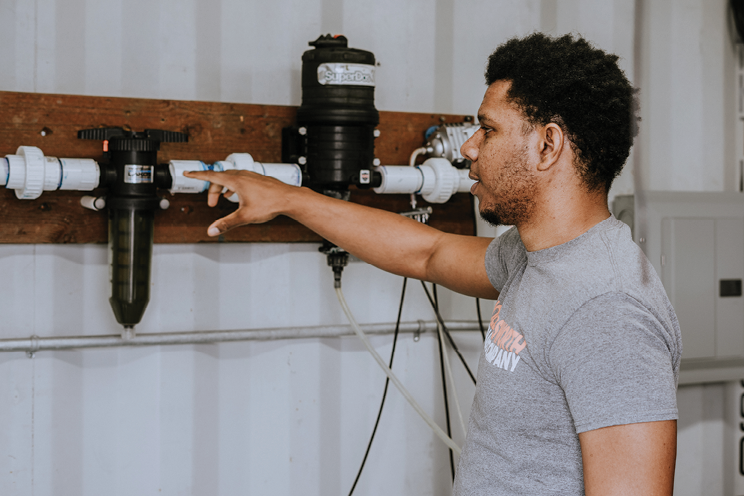
Grow With the Market
Finding efficiencies wherever they hide helps THC Co. remain competitive in Washington’s challenging market. Finding where to cut costs or increase productivity extends past the greenhouses and into the post-harvest processing. That’s where Joy comes in.
As director of operations, Joy is tasked with ensuring that team members have everything they need to complete their jobs effectively and that the company is meeting production and delivery deadlines. Her days are long: She usually wakes up at 5 a.m., her commute from Seattle starts at 6 a.m., and she typically works 12 hours. Her schedule has improved (slightly) as she’s figured out how to best structure her days and company workflow.
In the first two years, Raft III, Joy and their father could be found “clustered together, watering the plants every day, trimming, harvesting,” Joy recalls. As the three organically found which roles were best for them, Joy gravitated toward the post-harvest tasks: the drying, curing, sorting, bagging and tagging. (Rhonda manages the finances, handling bills and payment schedules. And as a lifelong cannabis connoisseur, she doubles as the quality assurance and research and development branch for THC Co.)
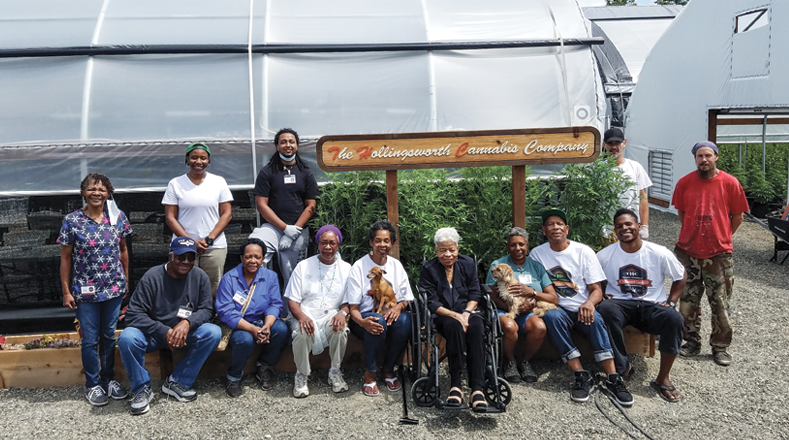
The company’s post-harvest process is extensive, if a bit expedited. Freshly cropped plants first pass through a Twister T4 wet trimmer, where large fan leaves are knocked off the bud. From there, buds move into one of two temperature-controlled drying rooms to sit on perforated stainless-steel sheets for about “five or six days,” Joy says. A second machine trim using a Greenbroz dry trimmer removes sugar leaves (collected and used in the company’s pre-rolls) and prepares grade-A flower, the kind that will be sold in glass jars to consumers, for its final hand trim. THC Co. then cold-cures its products at roughly 35 degrees F for at least four weeks before the product is sold to a retailer.
Once harvest season begins, Joy and her processing team dry, trim and sort through 50 pounds to 60 pounds of flower per week. Any product not being sold as flower is sorted between different extraction processes and wholesale options. Because the company has its own processing capabilities, 70 percent of the harvest is sold to retailers under one of the company’s five brands (THC Co., Hollingsworth Cannabis, PAPAVU, Joystick and Elio CBD), meaning 30 percent of the product is sold white label/wholesale to other producer/processors.
Further, “70 percent of our retail sales are allocated toward pre-rolls, infused pre-rolls and oil,” Joy explains.And just like it helped her brother in the cultivation area, automation has helped Joy in post-harvest. For example, the company added equipment to help with packing pre-rolled joints. “We went from packing a couple-hundred pre-rolls a day … to doing thousands a day,” Joy says.
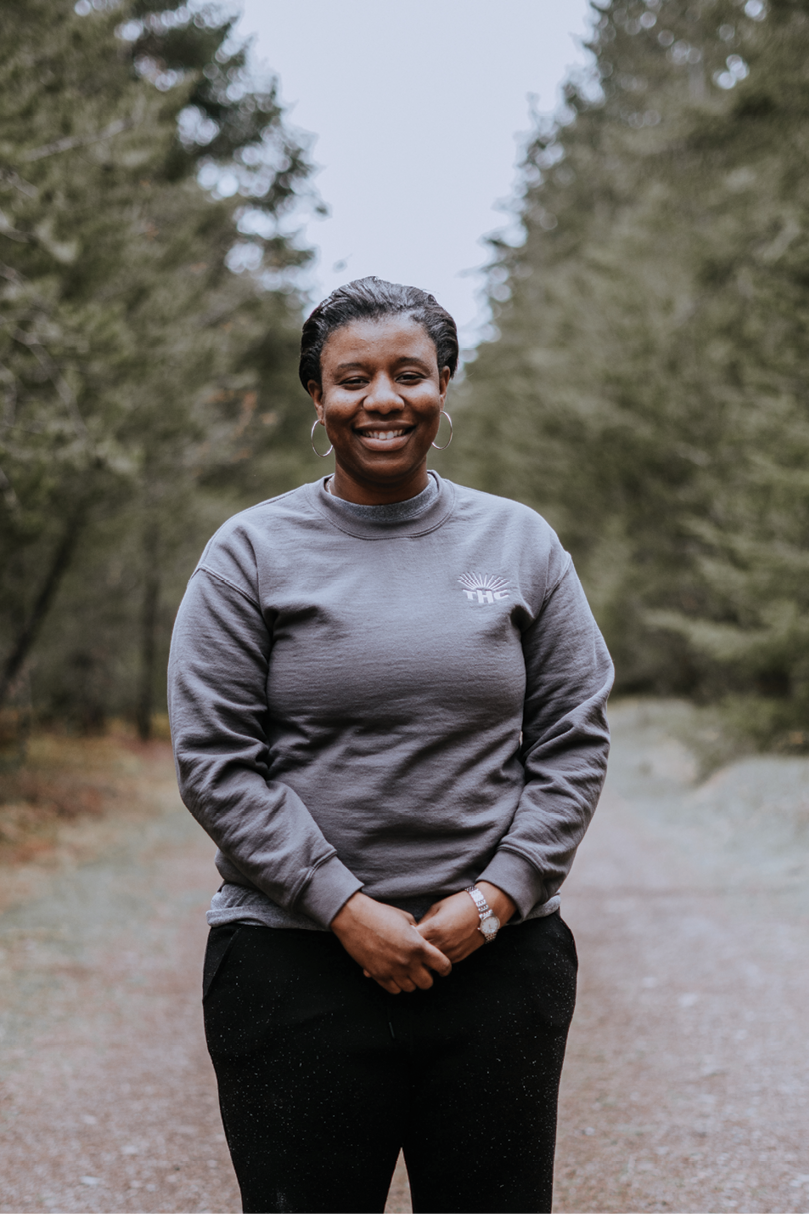
The company’s business model was forced to change “because the market has changed,” Joy explains. “We were trying to be everything for everybody. And I think a lot of people were in that boat because they wanted to get sales, … and the consumer didn’t really know what they wanted.”
For example, how the company packages and sells flower lots to its retailers reflects just how the market evolved and the consumer became more educated. “When the market first started, people wanted to try a little bit of this, a little bit of that,” Joy says. “Stores have gotten comfortable with knowing their clientele, people are willing to spend more, and they’re willing to buy certain brands, and knowing different strains, and they’re ... able to navigate that a little bit easier. So naturally we shifted [from single grams] to doing [only] eighths.”
The impact of that shift on the company’s bottom line was immediate. While the Hollingsworths were spending more money on a per-package basis for larger glass jars, their total packaging costs went down as they no longer had to bag and tag nearly 454 individual glass jars. “Ain’t nobody got time for that,” Joy says with a chuckle.
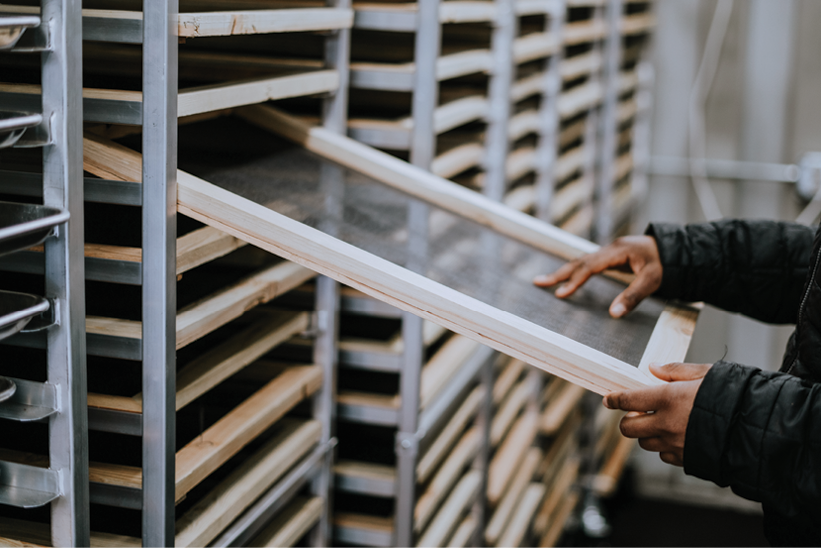
Blood Is Thicker Than Cannabis
On the front lines of that customer and retailer relationship is the Hollingsworth’s patriarch, Raft Jr. During the past five years with the family company, his role has shifted from being his son’s mentor in building the business to managing sales relationships with partner dispensaries.
Acting as a customer relations specialist and traveling sales rep has given Raft Jr. a wide-lens perspective on the Washington market, and his input helps shape the company and the brand. When Raft III and Joy discuss potential packaging or logo changes, their father acts as a voice for retailers as he communicates what he’s seeing and hearing from the business’s customers.
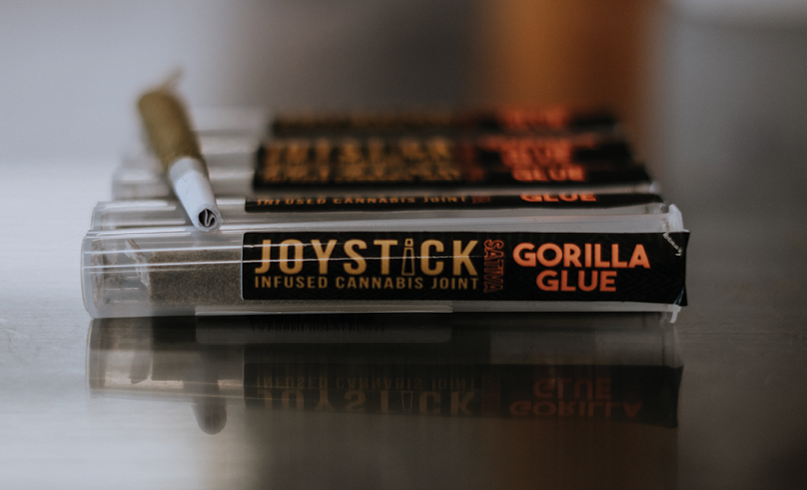
“I’m really trying to research the market [while on sales calls],” explains Raft Jr. “When I’m visiting stores, I’m looking at layouts, looking at how the stores [present products] and see[ing] how we can get in the store and then … how we can be featured once we’re in that store.”
Raft Jr.’s sales pitch changes as dispensary purchasing managers become more educated on cannabis options and get a better sense of their customers’ needs. “It did start with price,” he says of early conversations. Today’s questions focus mostly on terpene and cannabinoid content, growing conditions and customer service. Instead of being prepared to beat competition on price alone, Raft Jr. often asks dispensary managers what their customers are looking for. “And then I tried to come up with how I can provide that type of a product to [that] store,” he says. “And then I look to see what’s in [the] store and how I can improve upon the selection.”
As much as he likes interfacing with dispensaries and helping build a start-up business, what Raft Jr. and the rest of the Hollingsworth clan appreciate the most about their company is the company they get to keep. “Working with my family, seeing them, working with them every day, that’s the best thing. And the worst thing is seeing my family and working with them every day,” Raft Jr. says with a laugh.
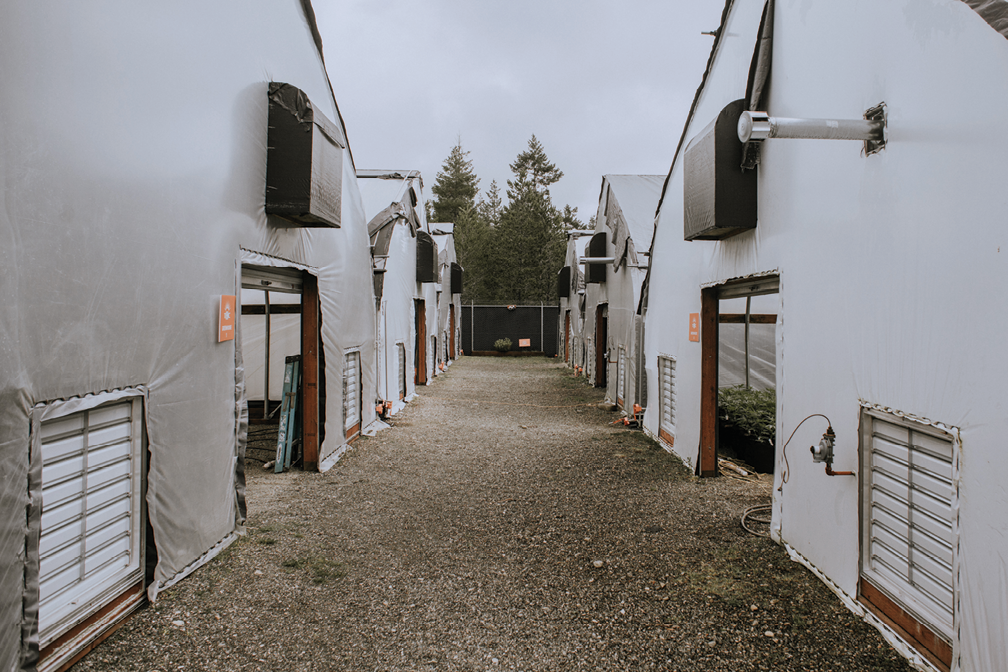
Having those people to fall back on can sometimes be the only thing that keeps the brother and sister duo from throwing in the towel. Their mother, Rhonda, remembers a talk she and her husband had with their children after a particularly difficult week left Raft III and Joy dejected about their business’s prospects. It was a Sunday night, she recalls, “And we said to them, ‘You know what people are doing right now, everybody on this block, just about everybody that you know? They are getting ready to get up and go to a job, and many of them hate the job they’re going to. You guys are doing something very rare: You’re making the decision of whether or not you even have to go into your own office. And that’s a luxury that is so rare for two 30-year-old black people.’
“And that’s what every parent wants for their child, for them to get up and decide whether or not they’re going to go to work in their own business, to work for themselves, to make decisions for themselves.”

Explore the May 2019 Issue
Check out more from this issue and find you next story to read.
Latest from Cannabis Business Times
- Rescheduling Would Have Saved Verano $80M in 2023 Tax Payments, CEO Says
- Aurora Marks 1st Medical Cannabis Shipment to New Zealand Market
- Where All 100 US Senators Stand on SAFER Banking Act
- Blumenauer Unveils Legislative Blueprint, Additional Administrative Action Needed Following Rescheduling
- Cannabis Rescheduling FAQ: What Now?
- From Custodian to Cultivation Supervisor
- California City in Cannabis Retail Desert Welcomes 1st Dispensary
- US Senate Democrats Forgo Addressing Intoxicating Hemp in 2024 Farm Bill Summary
